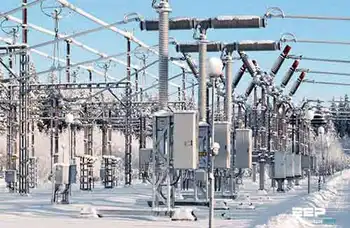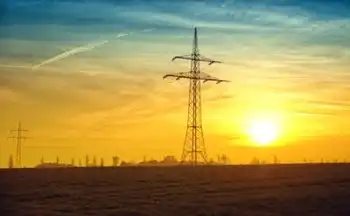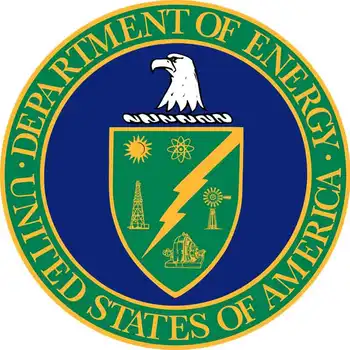Missed energy opportunities
TORONTO, ONTARIO - The province is looking for new "transformative energy innovations" that carry a "wow factor" and can make Ontario shine on the world stage.
So says a memo hastily distributed last month by the government-created Ontario Centres of Excellence, which recently received $15 million in public funds earmarked for "low-carbon technologies."
It must be election time.
There's a certain irony to this, because as hungry start-ups across the province were busy putting together a five-page project proposal in hopes of getting a slice of that funding, the Ontario Power Authority was putting out a 20-year electricity plan for the province that decided to exclude how alternative approaches to power generation – such as fuel cells, gasification and pumped storage – could make meaningful contributions to the grid over the next two decades.
It's fair to ask why the government, so willing to throw $15 million at "transformative" energy technologies, is being guided by a planning authority that's giving short shrift to innovations, many of them Canadian, that can transform our electricity system today.
Yes, the power authority has implemented a standard offer program meant to encourage development of small-scale renewables such as solar, wind, and biomass. Yes, it has awarded long-term contracts to purchase wind power and plans to significantly expand that investment. All very good.
But as Energy Minister Dwight Duncan said last month, "We have to look at every available opportunity." This simply isn't happening.
In the final plan submitted on Aug. 29 to the Ontario Energy Board, the power authority reduced its earlier projection for wind development by 800 megawatts and shifted it over to hydroelectric dams in the north.
It also made clear that it has no plans to go beyond the minimum requirements laid out in a directive from the energy minister, who wants at least 15,700 megawatts of renewable energy supply in place by 2025.
The plan, according to the power authority, "does not seek to exceed the directive's goals for renewable resources. This is because the incremental renewable resource would be large wind projects. These projects would not be cost-effective when compared to the supply resources included in the plan that would be displaced."
This is troubling.
First, the large-scale deployment of clean power isn't the exclusive domain of wind, which is but one of many options available.
Second, the power authority ignores that the cost of renewable technologies is expected to drop considerably over 20 years, and likely much sooner. Much can happen over two decades, if you consider that most of us never heard of the Internet back in 1987.
Third, the plan makes clear that cost (i.e. investment in nuclear power) trumps the environment after the minister's directive has been met, though it doesn't factor in the true environmental costs in its assessment of nuclear.
The power authority says it will review its 20-year plan in three years and is open to considering new approaches at that time. And in talking with officials there, a sincere attempt is being made to be flexible. But is this realistic?
We all know that the further you go down a path of big-build nuclear, the harder it is to change course. And once you've accepted your course, the search for alternatives, more often than not, loses momentum.
For this reason, it's prudent to factor in the alternatives today and plan accordingly. Feasible power-generation options do exist, and all of them could have been given more weight in the power authority's current plan:
Pumped storage: The power authority in the past has recognized the potential of pumped storage as a way to store wind power so we can dispatch it as needed. It allows us to get higher value out of otherwise undependable renewables, and can replace the use of coal and natural gas on the grid.
The power authority's preliminary 20-year plan cites 1,500 megawatts of pumped storage that could be developed at three sites – one located near Peterborough, another in northern Ottawa Valley and another near Atikokan. Sources tell me another massive site north of Thunder Bay could alone economically provide more than 1,000 megawatts of power storage over a period of more than 24 hours.
Again, this isn't electricity generation per se, but we don't really need new generation in this province as much as ways to better use the electricity we can produce.
Energy-from-waste: Most environmentalists don't like this technology, largely because they don't believe the claims. But a pilot project that's about to enter full operation in the Ottawa area is poised to prove that energy-from-waste can be done in an environmentally responsible way.
Rod Bryden, chief executive of Plasco Energy and overseer of the Ottawa project, is prepared to let his company's facility speak for itself. He says preliminary results have attracted the attention of several municipalities, and he figures it's a matter of time before Toronto – highly reluctant under Mayor David Miller's watch – gives the technology serious consideration.
"If Ontario was to process the 10 million tonnes of waste, which it currently puts into landfill, through a system with the kind of efficiency that Plasco's technology offers, it would produce nearly half of the output of Ontario's largest coal plant," says Bryden. "You'd get about 1,600 megawatts out of the waste you're putting into the ground right now."
The technology gets 2.5 times more energy out of a tonne of garbage than traditional incineration technology and emissions are well below regulatory limits – certainly outperforming Ontario's cleanest coal plants. Bryden envisions dozens of these facilities scattered in Ontario communities that process local waste with local facilities.
Solar power: The problem with solar photovoltaic technology is that it's expensive, and there are certain folks who are understandably outraged that the province is willing to pay a 600-per-cent premium for solar power projects being developed in Ontario. Under the power authority's plan, solar capacity in the province will not exceed 88 megawatts over the next two decades – about the same amount that's already been contracted out to companies such as Skypower and OptiSolar, who are planning massive multi-megawatts solar farms in various locations throughout Ontario.
The power authority's reasoning for sticking with this number is simple: while there may be more projects announced, it doesn't expect all of them will get built. A prudent assumption, maybe, but many believe the 20-year plan seriously low-balls the potential of solar, which can supply power when we need it most – during the afternoon when the sun is at its hottest and air conditioners are blasting.
Paul Gipe from the Ontario Sustainable Energy Association believes it's easily possible within 10 years to have 1,000 megawatts of solar deployed across the province – and that's just for rooftop systems, not the massive farms that have been proposed. He estimates it would cost $7 billion to $10 billion, about double the cost of building a new nuclear reactor of similar capacity, and would only add half a cent to the per-kilowatt cost of electricity on consumers' bills.
Offshore wind: We typically associate offshore wind with massive turbines located in turbulent ocean waters, but there's great potential to install turbines in the Great Lakes where waters are more shallow, manageable and accessible, and wind is more constant compared to land-based wind farms.
Toronto Hydro Corp. has seriously considered an offshore wind project in Lake Ontario near the Scarborough Bluffs that would have a capacity of up to 200 megawatts. Trillium Power Energy Corp., wants to build a 710-megawatt offshore farm east of Toronto. It would consist of 140 turbines about 15 kilometres offshore of Prince Edward County, hardly detectable from land and outside all migratory routes for birds and butterflies.
The financial backers are there, says Trillium chief executive John Kourtoff. But offshore projects were put on hold last November after the Ministry of Natural Resources issued a moratorium on development until more studies could be done. In the meantime, while Canadian developers twiddle their thumbs, U.S. states such as Ohio are positioning themselves to develop offshore projects in Lake Erie.
Offshore wind is considered the next major growth area in the wind-power sector, and experts say it would be easier and less expensive to do projects in a lake than in the ocean. The ministry is expected to lift the moratorium, likely by year's end, but the power authority excluded such projects from its roadmap without explanation.
Co-generation: Also referred to as "combined heat and power." Algoma Steel Inc. in Sault Ste. Marie plans to use waste gases from its blast furnaces to generate about 70 megawatts worth of power. Northland Power Inc. is building a 236-watt natural gas plant that will sell both steam and electricity to Abitibi-Consolidated Inc.'s newsprint-recycling mill in Thorold. The leftover electricity not used by Abitibi will be sold into the grid.
If you think of all the buildings and facilities out there where excess heat and flu gases can be captured and put to good use, the enormous potential becomes obvious. Groups like WWF-Canada and the Pembina Institute argue that 3,000 megawatts of cost-competitive co-generation could be put in place by 2012, and a total of 5,000 megawatts by 2017. They consider these numbers a conservative estimate.
Thomas Casten of Recycled Energy Development LLC, who is chair of a new Ontario group called the Alliance for Clean Technology, estimates that waste heat and gases from the province's 77 biggest industrial exhaust stacks could alone produce about 600 megawatts – enough to replace two coal stations up north. Casten considers this low-hanging fruit that could be implemented quickly. "It would not require any additional fossil fuel and would produce no incremental CO{-2} emissions," says Casten.
The power authority has only accounted for 584 megawatts of co-generation between now and 2027, though a new standard offer program for small-scale co-generation could add a bit to that figure. It's just a slice of what's doable, says Keith Stewart of WWF-Canada.
The problem, as folks like Casten and Stewart see it, is that the standard offer only accommodates deployments under 10 megawatts, meaning the lion's share of projects out there can't participate.
Forest and agricultural bioenergy: This type of bioenergy would also achieve two other public policy objectives: helping farmers and boosting northern economies.
The power authority estimates in its plan that 300 megawatts of power could be produced from animal manure, 450 megawatts from crop waste and 300 megawatts from forest biofibre – the bark, branches and tops of trees removed and unused after harvesting.
Those numbers are a heavy discount on the potential of what's out there. For example, it's assumed that 90 per cent of forest biofibre can't be retrieved economically. "10 per cent is really low," says Melissa Felder, an environmental consultant in Toronto and bioenergy expert. For manure it's 75 per cent and for crop residue it's 80 per cent. "The lack of serious consideration to bioenergy potential is disturbing and short-sighted," she adds.
But the power authority trims those targets even further under second analysis. Under its final plan, it brings the 750 megawatts it identified for manure and crop residue down to 150 megawatts and the 300 megawatts it calculated for forest biofibre down to 150 megawatts.
"The planning assumptions ... are less than the total theoretical potential identified because there is significant uncertainty with respect to the amount of biomass resource that will be developed to produce electricity," the power authority explains.
There's uncertainty because there's no plan from which supportive policy can sprout. Certainly, without a commitment to build nuclear from the government, there would be uncertainty around new nuclear plants as well. The same goes with the ethanol market in Ontario without a government mandate. Seems in this instance the power authority is part of the problem.
The final tally: A feasible target of at least 10,100 megawatts versus the OPA's commitment to 1,488 megawatts in its 20-year plan.
If just a third of this potential was adopted it would eliminate the need for 1,000 megawatts of new nuclear capacity. What can be done, with some hard work and political will, would give the government more flexibility as it phases out the use of coal, and might even reduce our need to refurbish old nukes.
The question is whether the next premier of Ontario, whoever he may be, has the will to go that extra low-carbon mile, and whether the bureaucratic engine he commands agrees to get behind the cause.
So far, and I'd be happy to be proven wrong, the answer is "no" – on both accounts.
Related News

US Dept. of Energy awards Washington state $23.4 million to strengthen infrastructure
OLYMPIA - Washington state has received a $23.4 million Grid Resilience State and Tribal Formula Grant from the U.S. Department of Energy (DOE) to modernize the electric grid and reduce impacts due to extreme weather and natural disasters. Grid Resilience State and Tribal Formula Grants aim to ensure the reliability of power sector infrastructure so that communities have access to affordable, reliable, clean electricity.
“Electricity is an essential lifeline for communities. Improving our systems by reducing disruptive events is key as we cross the finish line of a 100% clean electricity grid and ensure equitable benefits from the clean energy economy…




